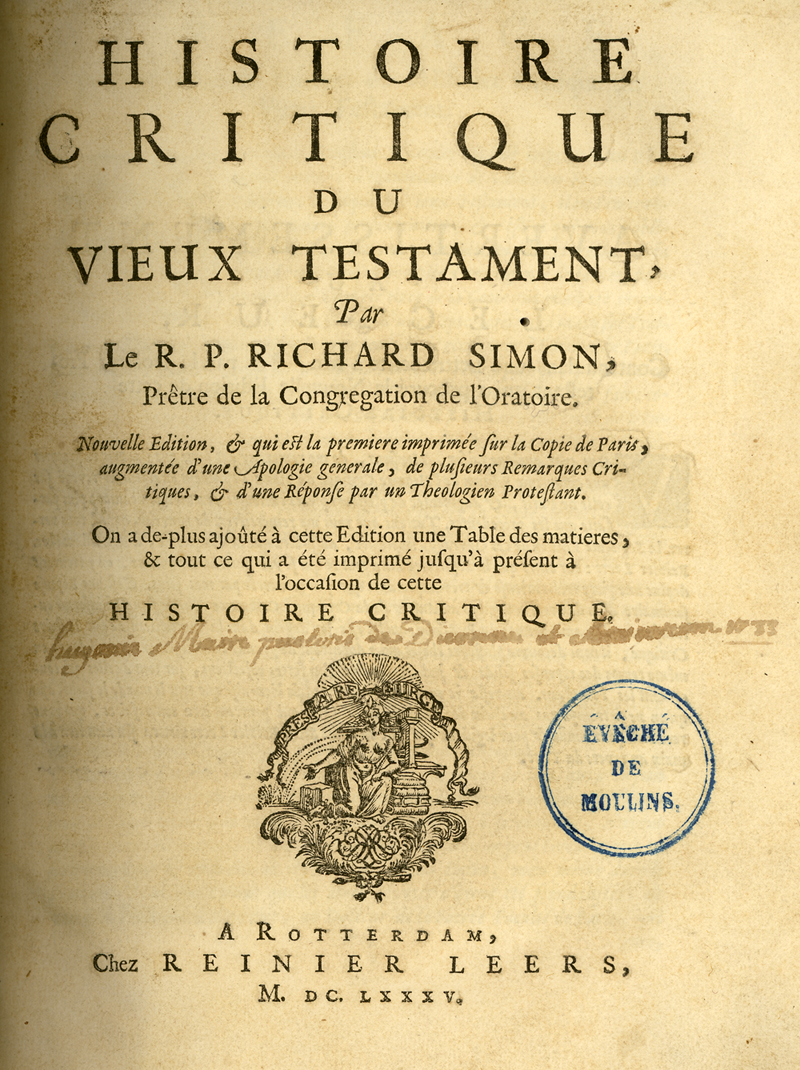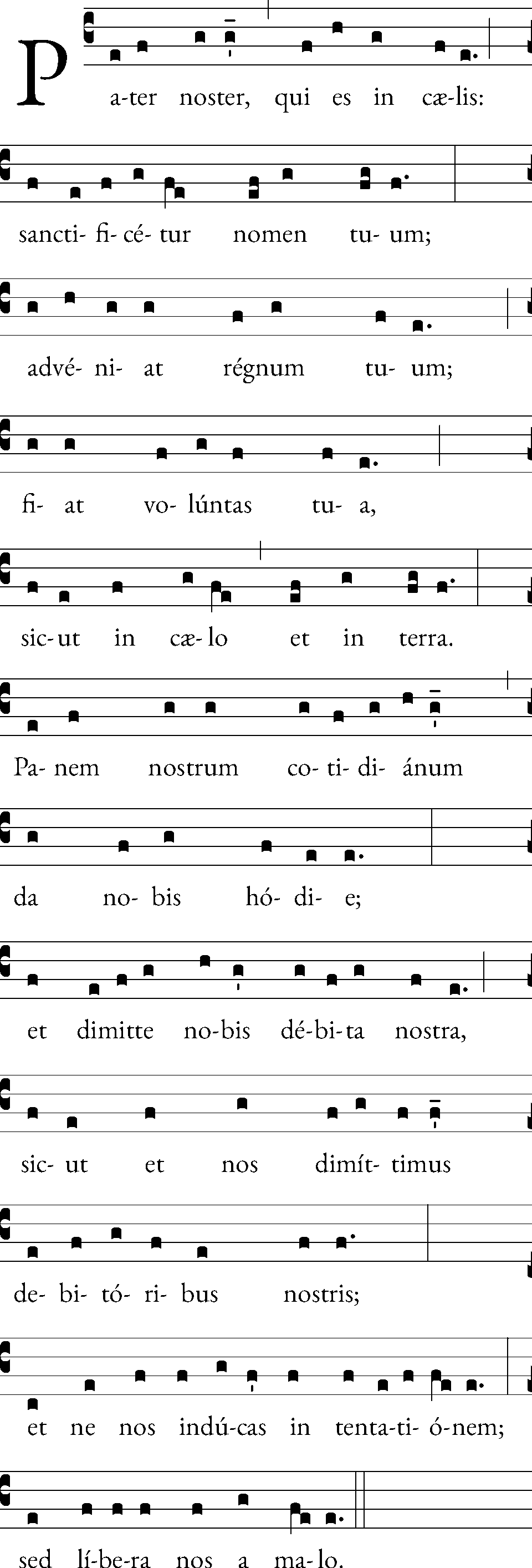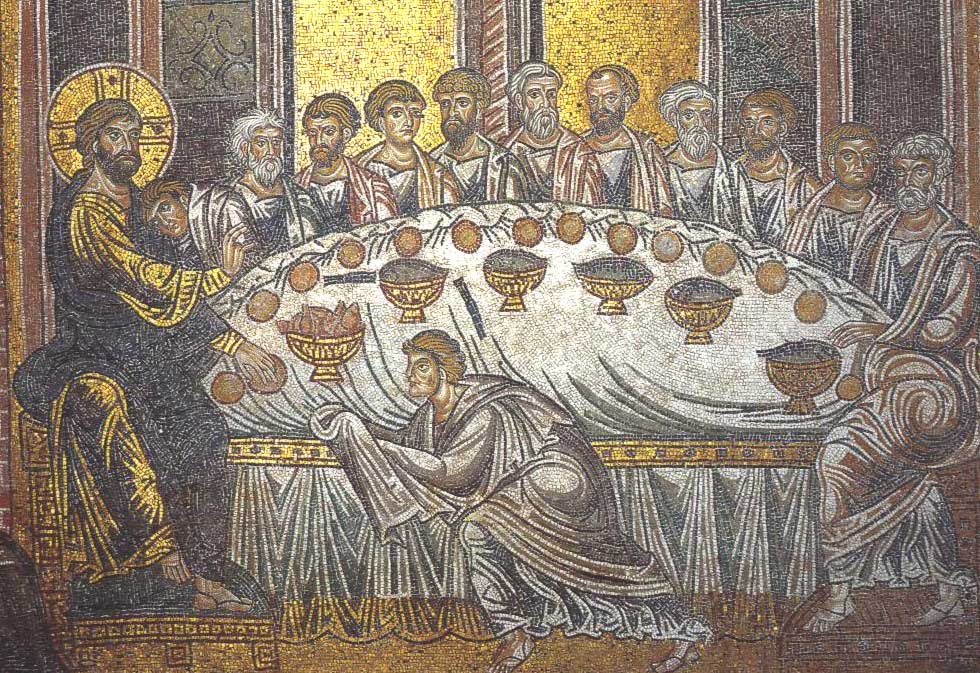|
Criterion Of Multiple Attestation
The criterion of multiple attestation, also called the criterion of independent attestation or the cross-section method, is a tool used by Biblical scholars to help determine whether certain actions or sayings by Jesus in the New Testament are from the Historical Jesus. Simply put, the more independent witnesses that report an event or saying, the better. This criterion was first developed by F. C. Burkitt in 1906, at the end of the first quest for the historical Jesus. Description The gospels are not always independent of each other. Matthew and Luke, for example, are likely dependent on Mark. The ''criterion of multiple attestation'' focuses on the sayings or deeds of Jesus that are attested to in more than one independent literary source such as Mark, Paul, Q, M, L, John, Josephus, or Thomas.John P. Meier, A Marginal Jew: Rethinking the Historical Jesus, Volume IV: Law and Love', Yale University Press, 2009. The force of this criterion is increased if a given motif or them ... [...More Info...] [...Related Items...] OR: [Wikipedia] [Google] [Baidu] |
Biblical Criticism
Biblical criticism is the use of critical analysis to understand and explain the Bible. During the eighteenth century, when it began as ''historical-biblical criticism,'' it was based on two distinguishing characteristics: (1) the concern to avoid dogma and bias by applying a neutral, non-sectarian, reason-based judgment to the study of the Bible, and (2) the belief that the reconstruction of the historical events behind the texts, as well as the history of how the texts themselves developed, would lead to a correct understanding of the Bible. This sets it apart from earlier, pre-critical methods; from the anti-critical methods of those who oppose criticism-based study; from later post-critical orientation, and from the many different types of criticism which biblical criticism transformed into in the late twentieth and early twenty-first centuries. Most scholars believe the German Enlightenment () led to the creation of biblical criticism, although some assert that its roo ... [...More Info...] [...Related Items...] OR: [Wikipedia] [Google] [Baidu] |
Josephus On Jesus
The extant manuscripts of the book ''Antiquities of the Jews'', written by the first-century Jewish historian Flavius Josephus around AD 93–94, contain two references to Jesus of Nazareth and one reference to John the Baptist. The first and most extensive reference to Jesus in the ''Antiquities'', found in Book 18, states that Jesus was the Messiah and a wise teacher who was crucified by Pontius Pilate. It is commonly called the '' Testimonium Flavianum''. Almost all modern scholars reject the authenticity of this passage in its present form, while most scholars nevertheless hold that it contains an authentic nucleus referencing the life and execution of Jesus by Pilate, which was then subject to Christian interpolation or alteration. However, the exact nature and extent of the Christian addition remains unclear. Modern scholarship has largely acknowledged the authenticity of the second reference to Jesus in the ''Antiquities'', found in Book 20, Chapter 9, which mentio ... [...More Info...] [...Related Items...] OR: [Wikipedia] [Google] [Baidu] |
Pontius Pilate
Pontius Pilate (; grc-gre, Πόντιος Πιλᾶτος, ) was the fifth governor of the Roman province of Judaea, serving under Emperor Tiberius from 26/27 to 36/37 AD. He is best known for being the official who presided over the trial of Jesus and ultimately ordered his crucifixion. Pilate's importance in modern Christianity is underscored by his prominent place in both the Apostles' and Nicene Creeds. Due to the Gospels' portrayal of Pilate as reluctant to execute Jesus, the Ethiopian Church believes that Pilate became a Christian and venerates him as both a martyr and a saint, a belief which is historically shared by the Coptic Church. Although Pilate is the best-attested governor of Judaea, few sources regarding his rule have survived. Nothing is known about his life before he became governor of Judaea, and nothing is known about the circumstances that led to his appointment to the governorship. Coins that he minted have survived from Pilate's governorship, as we ... [...More Info...] [...Related Items...] OR: [Wikipedia] [Google] [Baidu] |
Crucifixion Of Jesus
The crucifixion and death of Jesus occurred in 1st-century Judea, most likely in AD 30 or AD 33. It is described in the four canonical gospels, referred to in the New Testament epistles, attested to by other ancient sources, and considered an established historical event. There is no consensus among historians on the details.Christopher M. Tuckett in ''The Cambridge companion to Jesus'' edited by Markus N. A. Bockmuehl 2001 Cambridge Univ Press pp. 123–124 In the canonical gospels, Jesus is arrested and tried by the Sanhedrin, and then by Pontius Pilate, who sentences him to flagellation and finally crucifixion by the Roman Empire.''The Cradle, the Cross, and the Crown: An Introduction to the New Testament'' by Andreas J. Köstenberger, L. Scott Kellum 2009 pp. 104–108Evans, Craig A. (2001). ''Jesus and His Contemporaries: Comparative Studies'' p. 316 Jesus was stripped of his clothing and offered vinegar mixed with myrrh or gall (likely posca), t ... [...More Info...] [...Related Items...] OR: [Wikipedia] [Google] [Baidu] |
Lord's Prayer
The Lord's Prayer, also called the Our Father or Pater Noster, is a central Christian prayer which Jesus taught as the way to pray. Two versions of this prayer are recorded in the gospels: a longer form within the Sermon on the Mount in the Gospel of Matthew, and a shorter form in the Gospel of Luke when "one of his disciples said to him, 'Lord, teach us to pray, as John taught his disciples. Regarding the presence of the two versions, some have suggested that both were original, the Matthean version spoken by Jesus early in his ministry in Galilee, and the Lucan version one year later, "very likely in Judea". The first three of the seven petitions in Matthew address God; the other four are related to human needs and concerns. Matthew's account alone includes the "Your will be done" and the "Rescue us from the evil one" (or "Deliver us from evil") petitions. Both original Greek texts contain the adjective ''epiousios'', which does not appear in any other classical or Koine Greek ... [...More Info...] [...Related Items...] OR: [Wikipedia] [Google] [Baidu] |
1 Corinthians 7
1 Corinthians 7 is the seventh chapter of the First Epistle to the Corinthians in the New Testament of the Christian Bible. It is authored by Paul the Apostle and Sosthenes in Ephesus. In this chapter, Paul replies to certain questions raised by the Corinthian church in a letter sent to him. Text The original text was written in Koine Greek. This chapter is divided into 40 verses. Textual witnesses Some early manuscripts containing the text of this chapter are: * Papyrus 129 (mid 2nd century; extant verses 32–37) *Papyrus 15 (3rd century; extant verses 18–40) *Codex Vaticanus (325–350) *Codex Sinaiticus (330–360) *Codex Alexandrinus (400–440) *Codex Ephraemi Rescriptus (~450; extant verses 1–17) *Papyrus 11 (7th century; extant verses 3–6, 10–11,12–14) Letter from Corinth In this chapter, Paul replies to certain questions raised by the Corinthian church in a letter to him. Methodist writer Joseph Benson comments: Principles of marriage (7:1–16) Verse 6 ... [...More Info...] [...Related Items...] OR: [Wikipedia] [Google] [Baidu] |
Luke 16
Luke 16 is the sixteenth chapter of the Gospel of Luke in the New Testament of the Christian Bible. It records the teachings and parables of Jesus Christ, including the famous parable of the " rich man and Lazarus".Halley, Henry H. ''Halley's Bible Handbook'': an Abbreviated Bible Commentary. 23rd edition. Zondervan Publishing House. 1962. The book containing this chapter is anonymous, but early Christian tradition uniformly affirmed that Luke the Evangelist composed this Gospel as well as the Acts of the Apostles.Holman Illustrated Bible Handbook. Holman Bible Publishers, Nashville, Tennessee. 2012. Text The original text was written in Koine Greek. This chapter is divided into 31 verses. Textual witnesses Some early manuscripts containing the text of this chapter are: *Papyrus 75 (AD 175-225) *Codex Vaticanus (325-350) *Codex Sinaiticus (330-360) *Codex Bezae (~400) *Codex Washingtonianus (~400) *Codex Alexandrinus (400-440) Parable of the Unjust Steward This parable of ... [...More Info...] [...Related Items...] OR: [Wikipedia] [Google] [Baidu] |
Mark 10
Mark 10 is the tenth chapter of the Gospel of Mark in the New Testament of the Christian Bible. It presents further teachings of Jesus as his journey progresses towards Jerusalem. Text The original text was written in Koine Greek. This chapter is divided into 52 verses. Textual witnesses Some early manuscripts containing the text of this chapter are: *Codex Vaticanus (325-350; complete) *Codex Sinaiticus (330-360; complete) *Codex Bezae (~400; complete) *Codex Alexandrinus (400-440; complete) *Codex Ephraemi Rescriptus (~450; complete) Location At the beginning of the chapter, Jesus and His disciples leave Galilee and travel to Perea, "the region of Judea by the other side of the Jordan". They travel south to cross the Jordan again and enter Jericho as Jesus makes His way towards Jerusalem. There is no mention of Samaria or the Samaritans in Mark's Gospel but this chapter outlines a route taken by travellers from Galilee to Jerusalem avoiding Samaria. Divorce After condemni ... [...More Info...] [...Related Items...] OR: [Wikipedia] [Google] [Baidu] |
1 Corinthians 11
1 Corinthians 11 is the eleventh chapter of the First Epistle to the Corinthians in the New Testament of the Christian Bible. It was authored by Paul the Apostle and Sosthenes in Ephesus. In this chapter, Paul writes on the conduct of Christians while worshiping together and enjoins the ordinances of headcovering and the Eucharist. Text The original text was written in Koine Greek. This chapter is divided into 34 verses. Textual witnesses Some early manuscripts containing the text of this chapter are: *Codex Vaticanus (AD 325–350) *Codex Sinaiticus (330–360) *Codex Alexandrinus (400–440) *Codex Ephraemi Rescriptus (~450; complete). *Codex Freerianus (~450; extant verses 9–10, 18–19, 26–27) *Codex Claromontanus (~550) * Codex Coislinianus (~550; extant verses 9–16) Imitator of Christ (11:1) Theologian John Gill suggests that these words "more properly close the preceding chapter, than begin a new one", and many commentators agree. Paul concludes his argumen ... [...More Info...] [...Related Items...] OR: [Wikipedia] [Google] [Baidu] |
Mark 14
Mark 14 is the fourteenth chapter of the Gospel of Mark in the New Testament of the Christian Bible. It contains the plot to kill Jesus, his anointing by a woman, the Last Supper, predictions of his betrayal, and Peter the Apostle's three denials of him. It then begins the Passion of Jesus, with the garden of Gethsemane and Judas Iscariot's betrayal and Jesus' arrest, followed by Jesus' trial before the Sanhedrin and Peter's denials of Jesus. Having 72 verses, this is the longest chapter in Mark's Gospel. The Gospel of Matthew's chapter which covers the same material, Matthew 26, has 75 verses. This chapter's material is presented somewhat differently in Luke 22, which has 71 verses. Jesus' arrest at Gethsemane, his trial, and Peter's denials are found in . Text The original text was written in Koine Greek. Textual witnesses Some early manuscripts containing the text of this chapter are: *Codex Vaticanus (325-350; complete) *Codex Sinaiticus (330-360; complete) * ... [...More Info...] [...Related Items...] OR: [Wikipedia] [Google] [Baidu] |
Last Supper
Image:The Last Supper - Leonardo Da Vinci - High Resolution 32x16.jpg, 400px, alt=''The Last Supper'' by Leonardo da Vinci - Clickable Image, Depictions of the Last Supper in Christian art have been undertaken by artistic masters for centuries, Leonardo da Vinci's late-1490s mural painting in Milan, Italy, being the best-known example. ''(Clickable image—use cursor to identify.)'' poly 550 2550 750 2400 1150 2300 1150 2150 1200 2075 1500 2125 1525 2300 1350 2800 1450 3000 1700 3300 1300 3475 650 3500 550 3300 450 3000 Bartholomew poly 1575 2300 1625 2150 1900 2150 1925 2500 1875 2600 1800 2750 1600 3250 1425 3100 1400 2800 1375 2600 James Minor poly 1960 2150 2200 2150 2350 2500 2450 2575 2375 2725 2375 2900 2225 3100 2225 3225 1600 3225 1825 2700 1975 2450 1925 2300 Andrew poly 2450 2575 2775 2500 2700 2650 2800 2700 2600 3000 2600 3250 2300 3250 2200 3200 2300 3000 Peter poly 2750 2500 2950 2400 3125 2600 3175 2700 3300 2850 3700 3200 3750 3200 3650 3350 3400 3200 3000 3 ... [...More Info...] [...Related Items...] OR: [Wikipedia] [Google] [Baidu] |
Kingdom Of God
The concept of the kingship of God appears in all Abrahamic religions, where in some cases the terms Kingdom of God and Kingdom of Heaven are also used. The notion of God's kingship goes back to the Hebrew Bible, which refers to "his kingdom" but does not include the term "Kingdom of God". The "Kingdom of God" and its equivalent form "Kingdom of Heaven" in the Gospel of Matthew is one of the key elements of the teachings of Jesus in the New Testament. The Gospel of Mark indicates that the gospel is the good news about the Kingdom of God. The term pertains to the kingship of Christ over all creation. Kingdom of "heaven" appears in Matthew's gospel due primarily to Jewish sensibilities about uttering the "name" (God). Jesus did not teach the kingdom of God per se so much as the ''return'' of that kingdom. The notion of God's kingdom (as it had been under Moses) returning became an agitation in "knaan," modern Israel, Palestine, and Lebanon, 60 years before Jesus was born, and ... [...More Info...] [...Related Items...] OR: [Wikipedia] [Google] [Baidu] |







_(14596857218).jpg)


